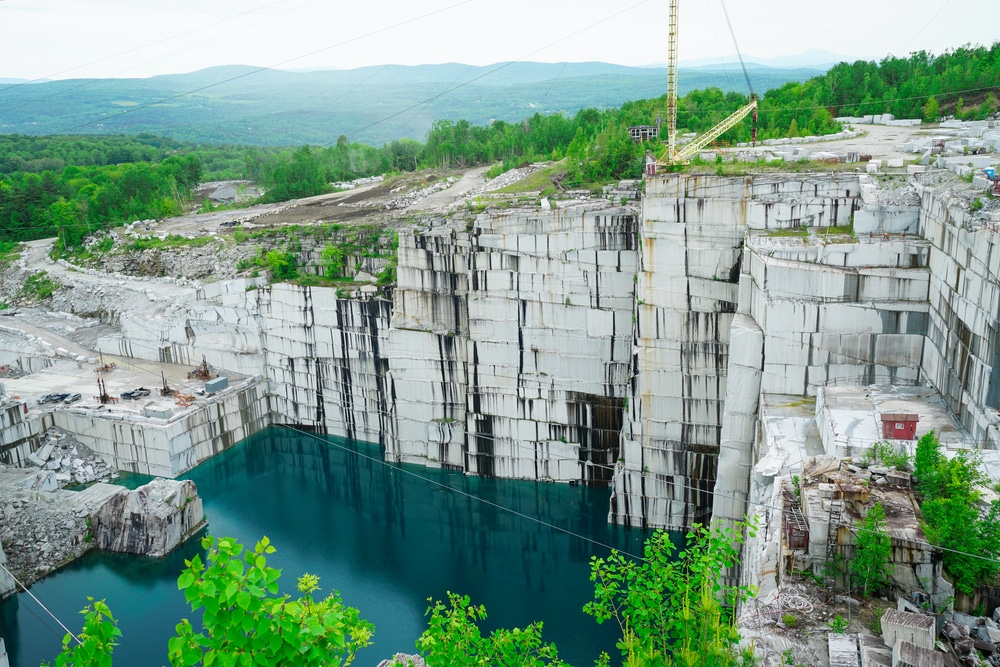Unlocking Natural Treasures: Granite Quarries in South Africa Unveiled
Unlocking Natural Treasures: Granite Quarries in South Africa Unveiled
Blog Article
Unveiling the Mysteries of Granite Quarrying: Where Stamina and Sophistication Meet
The globe of granite quarrying is a realm where the raw stamina of nature merges with human virtuosity to create structures that stand the examination of time with an air of style. From the depths of quarries to the precise sprucing up in workshops, the procedure of changing granite right into architectural marvels is a complicated dancing of practice and innovation. As we peer into the depths of this ancient craft, we start to reveal the surprise intricacies that shape the very essence of our developed atmosphere.
The Beginnings of Granite Quarrying
In the record of building background, the beginnings of granite quarrying are shrouded in a tapestry of old workmanship and geological wonders. Going back to ancient Egypt and Mesopotamia, the extraction of granite from quarries marked the beginning of a journey that would ultimately cause the production of some of the globe's most iconic structures.
Granite quarrying's roots can be traced to the competent craftsmens that identified the rock's longevity and aesthetic charm. With a combination of primitive devices and large resolution, these very early quarry employees discovered granite blocks that would certainly become the foundation of people.
As human beings advanced, so did the strategies of quarrying granite. The Romans, renowned for their design expertise, developed sophisticated approaches for removing granite to construct monuments, holy places, and roads that stood the examination of time.
The tradition of these ancient quarrying methods continues to form modern style, with granite staying a symbol of stamina and elegance in building and construction tasks around the globe. (granite quarries in south africa)
Tools of the Quarrying Trade
The development of granite quarrying techniques from old worlds to modern-day times highlights the important function played by the devices of the quarrying trade in forming the market's techniques. In ancient times, quarrying devices were fundamental, typically consisting of knives, hammers, and wedges made from materials like bronze or iron. These devices called for considerable manpower and time to remove granite obstructs from quarries.

Additionally, the intro of pneumatic tools and high-powered machinery has dramatically decreased the physical labor needed in quarrying procedures, boosting employee safety and security and productivity. As the quarrying industry continues to innovate, the tools of the trade remain at the leading edge of driving progression and forming the future of granite removal.
Extracting Blocks of Granite
Using accuracy machinery and advanced methods, the extraction of granite obstructs from quarries has come to be an advanced process in the modern-day quarrying industry. Regulated blasting strategies are then used to break apart the granite right into workable areas.

Polishing and Ending Up Methods
To accomplish a flawless surface area on granite blocks, proficient artisans use a collection of precise sprucing up and completing techniques. After the first extraction and forming processes, the granite obstructs go through an extensive polishing stage to enhance their natural appeal and resilience. One usual technique made use of in polishing granite is ruby abrasion, where industrial rubies are utilized to grind and brighten the stone to a smooth finish. This procedure not only develops a shiny surface area however also makes sure uniformity in color and appearance across the granite block.
Along with polishing, finishing strategies are related to additional improve the granite's appearance. These strategies may include flaming, sharpening, or brushing, each offering special textures and finishes to match different aesthetic choices. Flaming, for example, includes revealing the granite surface to high temperatures to produce a harsh, distinctive finish, suitable for outside applications where slip-resistance is essential. Refining, on the various other hand, gives a matte finish that is smooth to the touch, perfect for indoor counter tops and floor covering. By carefully choosing and applying these polishing and finishing strategies, artisans can change raw granite obstructs right into charming items that display both stamina and elegance.

Ecological Impact and Sustainability
With the go growing emphasis on environmental consciousness in the market, granite quarrying methods are increasingly scrutinized for their impact on natural deposits and long-term sustainability. Quarrying for granite can have significant environmental implications. The removal procedure usually includes using hefty equipment, nitroglycerins, and huge quantities of water, resulting in environment devastation, soil erosion, and water air pollution. Additionally, the transport of granite from quarries to refining centers generates carbon exhausts, further contributing to environmental degradation. granite quarries in south africa.
To minimize these effects and ensure sustainability in granite quarrying, sector stakeholders are adopting different actions. Implementing sophisticated innovations to decrease energy usage and water use, reclaiming quarried land for ecological repair, and promoting responsible sourcing methods are some approaches being utilized. Certifications such as the Woodland Stewardship Council (FSC) and the Leadership in Energy and Environmental Design (LEED) help consumers recognize eco pleasant granite items.
Final Thought
To conclude, granite quarrying is a procedure that requires specialized this devices and methods to extract blocks of granite and brighten them to a high degree of surface. While the ecological impact of quarrying can be significant, efforts are being made to boost sustainability techniques in the sector. Generally, granite quarrying is a fragile equilibrium between using the stamina and sophistication of this all-natural rock while lessening its impact on the atmosphere.
Report this page